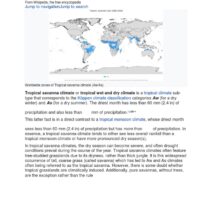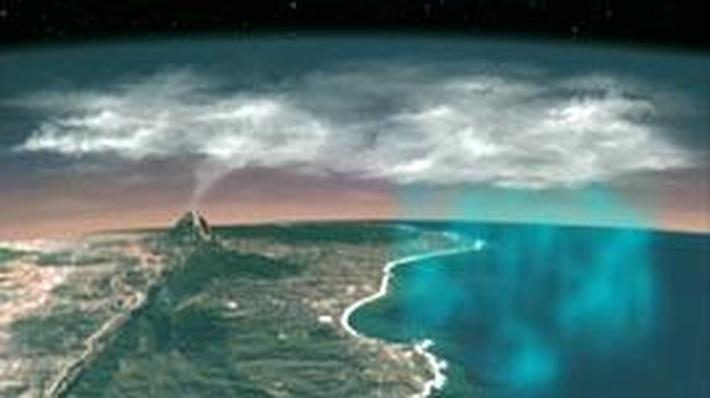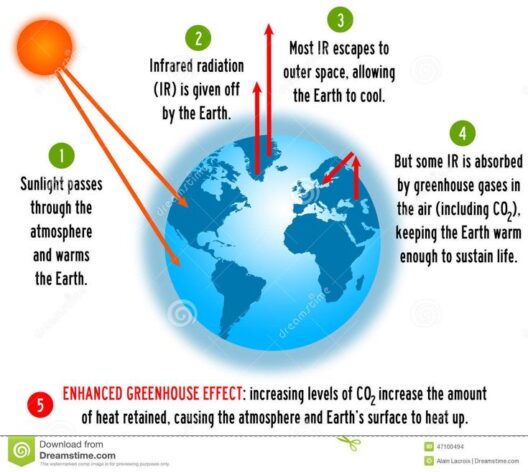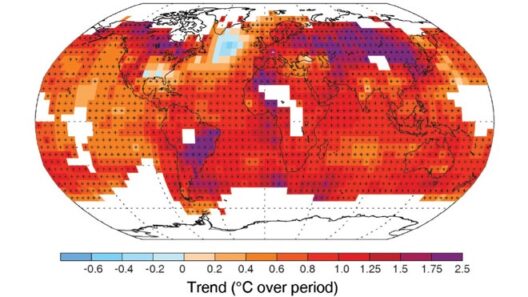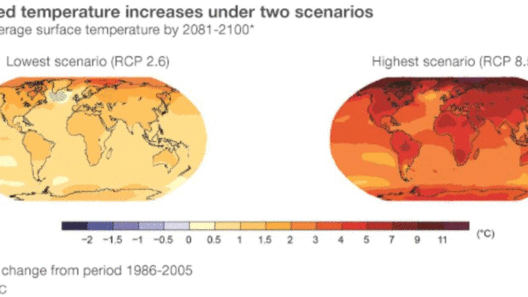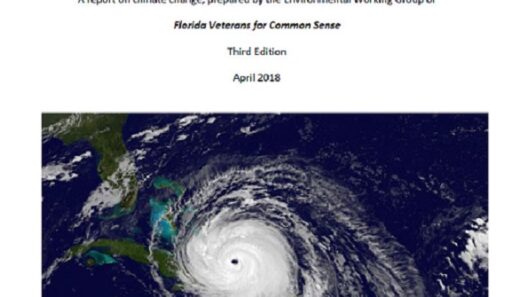Global warming has emerged as one of the most pressing environmental challenges of our time, necessitating a robust understanding of the mechanisms that underlie this phenomenon. At the core of the global warming discourse is the greenhouse effect, a natural process that not only sustains life on Earth but is also being exacerbated by human activity. This article delves into the intricacies of how global warming occurs, illuminating the science that propels this critical issue.
Understanding the Greenhouse Effect: A Necessary Prelude
The greenhouse effect is fundamentally the process through which certain gases in the Earth’s atmosphere trap heat from the sun. These gases, predominantly known as greenhouse gases (GHGs), include carbon dioxide (CO2), methane (CH4), nitrous oxide (N2O), and water vapor. While this process is essential for maintaining a habitable climate, an excess of these gases leads to an enhanced greenhouse effect, contributing to global warming.
Solar radiation reaches the Earth, predominantly in the form of visible light, which is absorbed by the planet’s surface and converted into infrared radiation—heat. Under natural conditions, a portion of this heat escapes back into space, aiding in the maintenance of a temperate climate. However, anthropogenic activities, such as fossil fuel combustion, deforestation, and industrial processes, are increasing the concentration of GHGs. Consequently, more heat is trapped, resulting in a gradual rise in global temperatures.
The Chemical Culprits: Analyzing Greenhouse Gases
To grasp the dynamics of global warming, it is pivotal to understand the most significant greenhouse gases and their contribution to atmospheric warming. Carbon dioxide, for instance, is the most prevalent anthropogenic GHG. Originating from the burning of fossil fuels for energy and transportation, as well as from deforestation practices, CO2 levels have surged since the Industrial Revolution. Its long atmospheric lifespan, ranging from 100 to 300 years, ensures a prolonged warming effect.
Methane, a potent GHG, has a far greater heat-trapping capability than CO2, albeit with a shorter atmospheric lifespan of approximately 12 years. Produced by livestock digestion, rice cultivation, and landfills, methane’s immediate environmental impact is alarming. Similarly, nitrous oxide, primarily released from agricultural and industrial activities, possesses a heat-trapping potential that is 298 times greater than CO2 over a 100-year period.
Despite their relatively lower concentrations compared to CO2, these gases collectively give rise to a formidable warming effect. The interactions between various GHGs in the atmosphere complicate the climate change narrative, necessitating targeted approaches to mitigate emissions across multiple sectors.
Feedback Loops: The Dangerous Amplifiers
The science of global warming does not culminate merely with the emission of GHGs. The dynamics of climate change are amplified by a series of feedback loops that exacerbate the initial warming. One of the most concerning feedback mechanisms is the loss of ice in polar regions. As temperatures rise, glacial and polar ice masses melt, decreasing the Earth’s albedo—its reflectiveness. This means that instead of reflecting sunlight back into space, darker ocean or land surfaces absorb more heat, further accelerating global temperature rise.
Forests, too, play a double-edged role. While they act as significant carbon sinks, sequestering CO2 from the atmosphere, they are also susceptible to increased temperatures and prolonged droughts. This vulnerability can lead to forest die-offs and increased wildfire occurrences, releasing stored carbon and further compounding the greenhouse effect.
Another critical feedback mechanism originates from the thawing of permafrost, which stores vast amounts of methane. As permafrost thaws, it releases this potent greenhouse gas into the atmosphere, initiating a cascade of warming that is difficult to halt. These feedback loops create an intricate web of implications, where each effect exacerbates the last, suggesting a potentially irreversible trajectory.
Social and Economic Implications: The Wider Spectrum
The repercussions of global warming extend beyond environmental degradation, with significant social and economic dimensions. Rising global temperatures lead to increased frequency and severity of extreme weather events—hurricanes, droughts, heatwaves, and floods are becoming more common. These events not only disrupt ecosystems but also threaten human livelihoods, displacing communities and increasing food and water scarcity.
Furthermore, global warming poses challenges to economic stability. Sectors such as agriculture, fisheries, and tourism are particularly vulnerable. Crop yields are affected by changing weather patterns, altering rainfall distributions, and generating increased pest populations. The fishing industry faces a challenge as ocean temperatures rise, impacting marine biodiversity and shifting fish populations.
Addressing global warming and its multifaceted consequences requires a collaborative approach that spans political, social, and economic realms. Policy measures aimed at reducing carbon footprints, transitioning to renewable energy sources, and enhancing conservation efforts can serve as vital mechanisms in mitigating the adverse effects of climate change.
Conclusion: A Call to Action for the Future
In conclusion, understanding how global warming occurs through the lens of the greenhouse effect emphasizes the urgency of immediate action. With comprehensive knowledge of the mechanisms at play, future generations can advocate for solutions that prioritize sustainability and environmental stewardship. As we navigate these turbulent waters, the role of education, community engagement, and policy advocacy becomes ever more critical. The preservation of our planet relies not only on understanding the science but also on mobilizing societies towards collective action against climate change.

